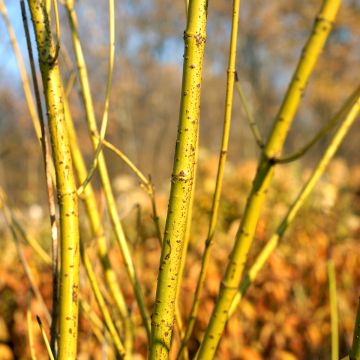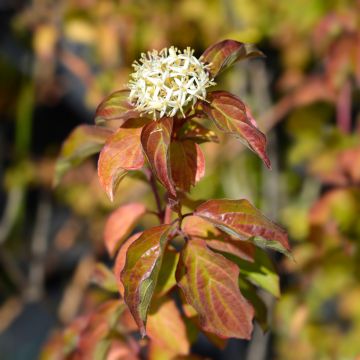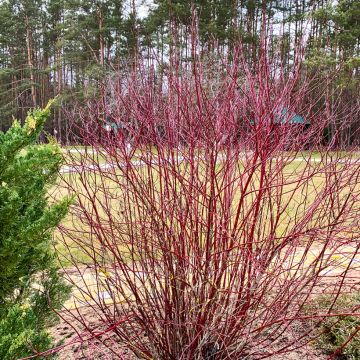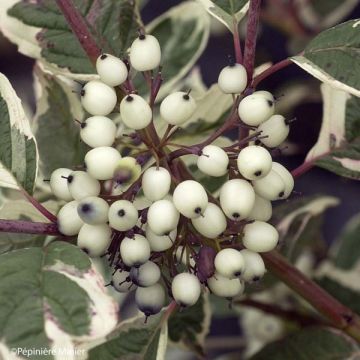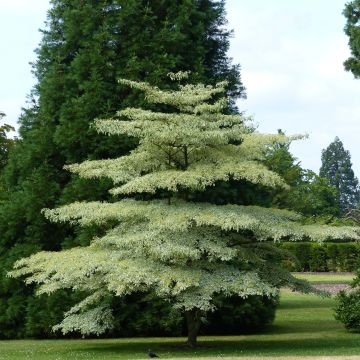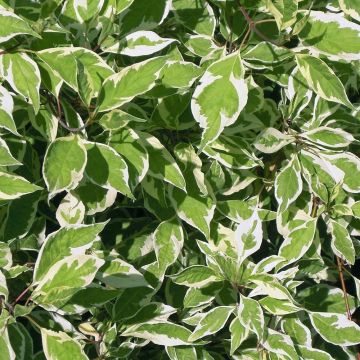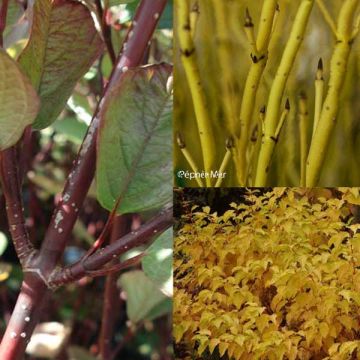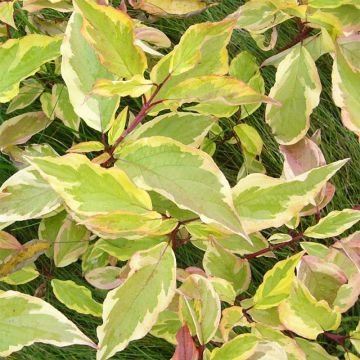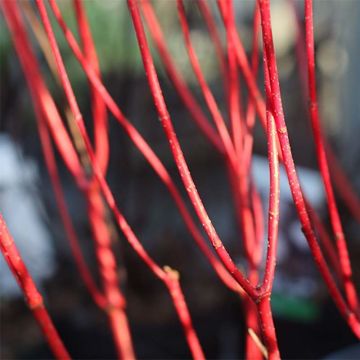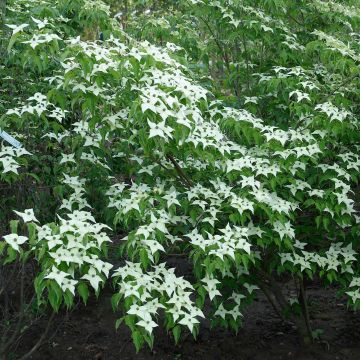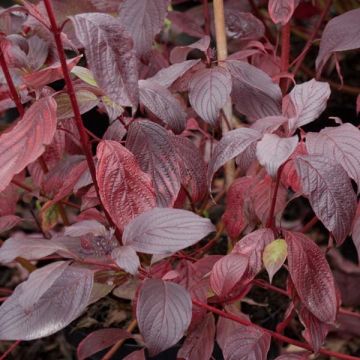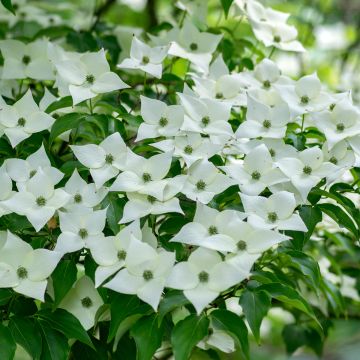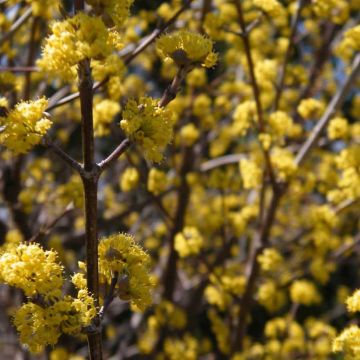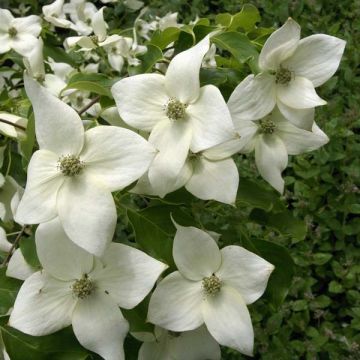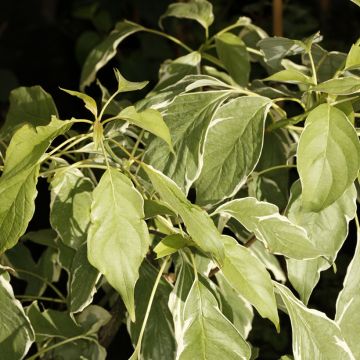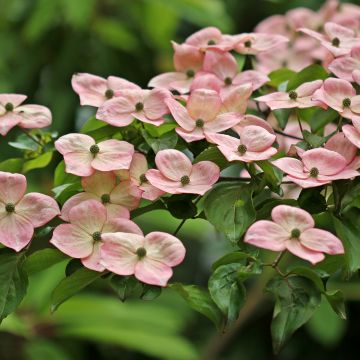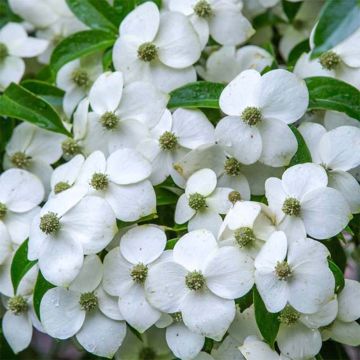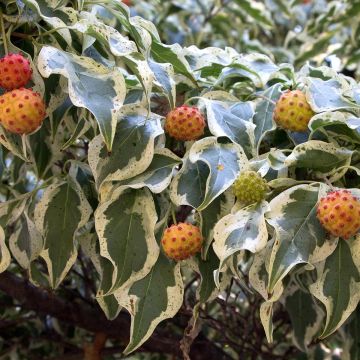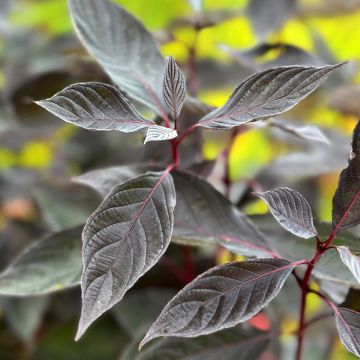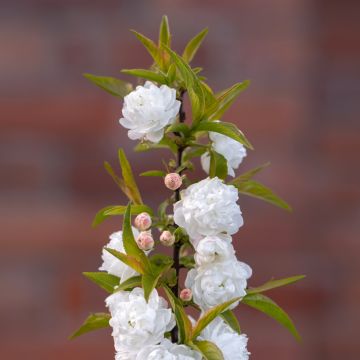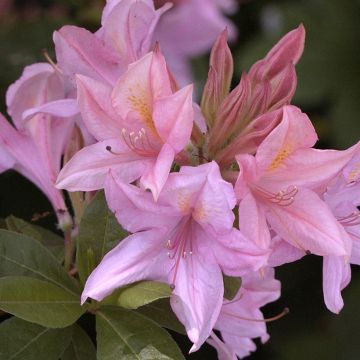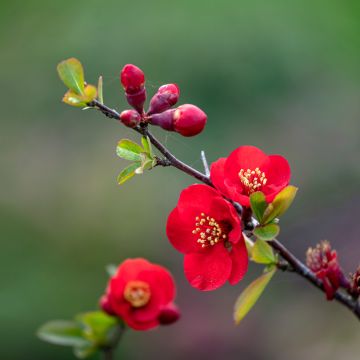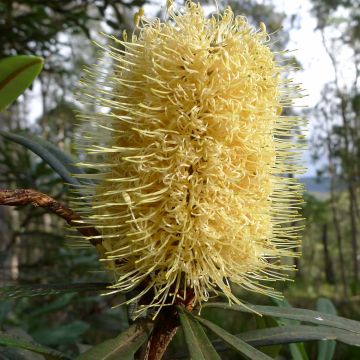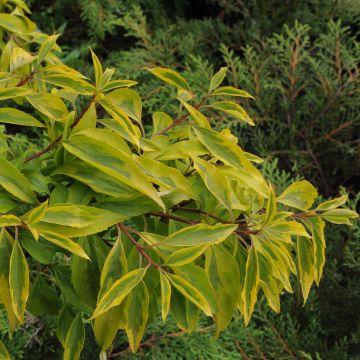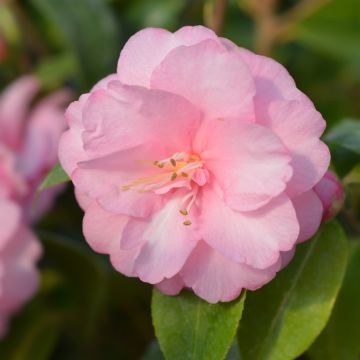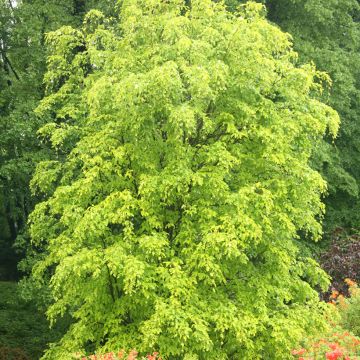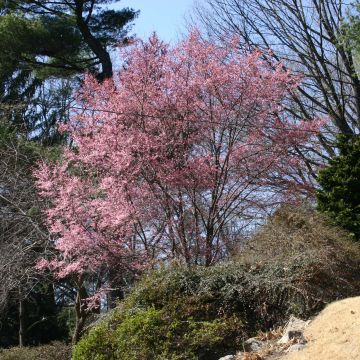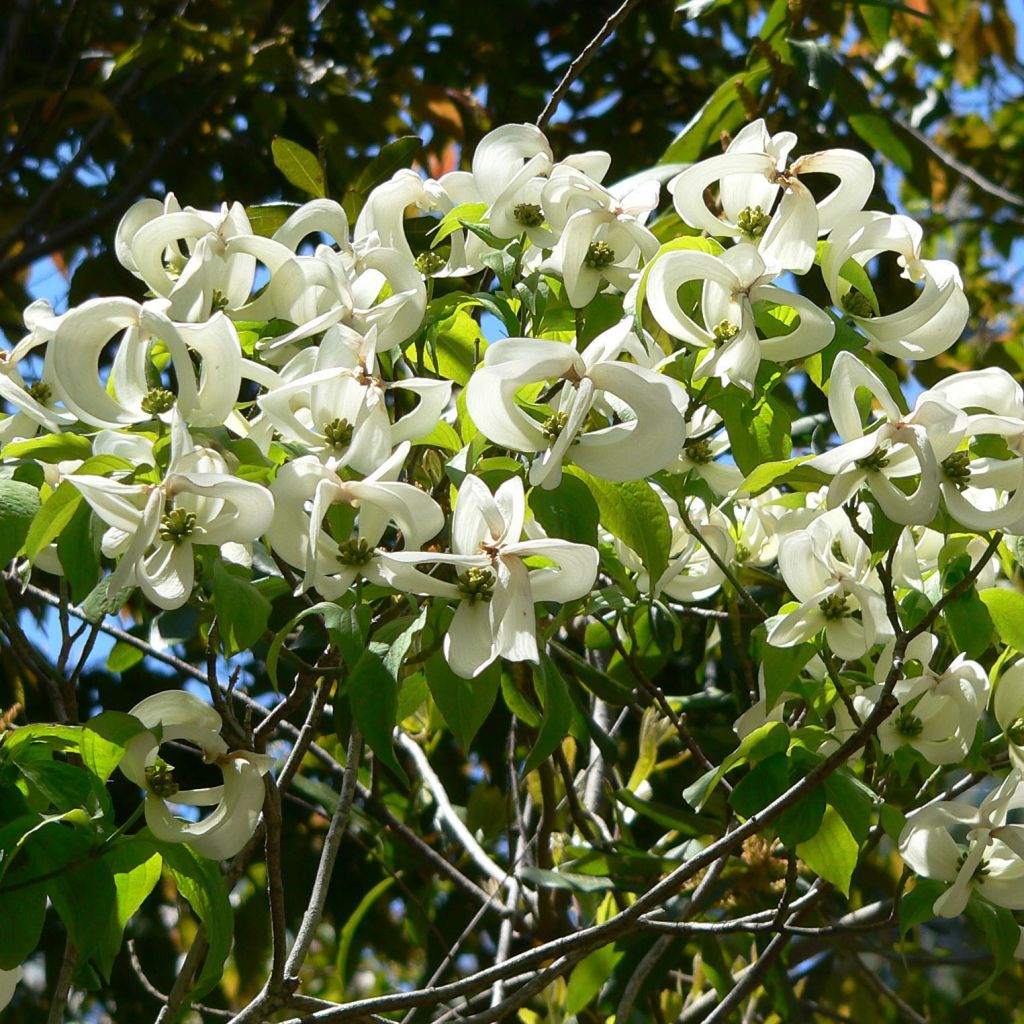

Cornus florida subsp. urbiniana - Flowering Dogwood
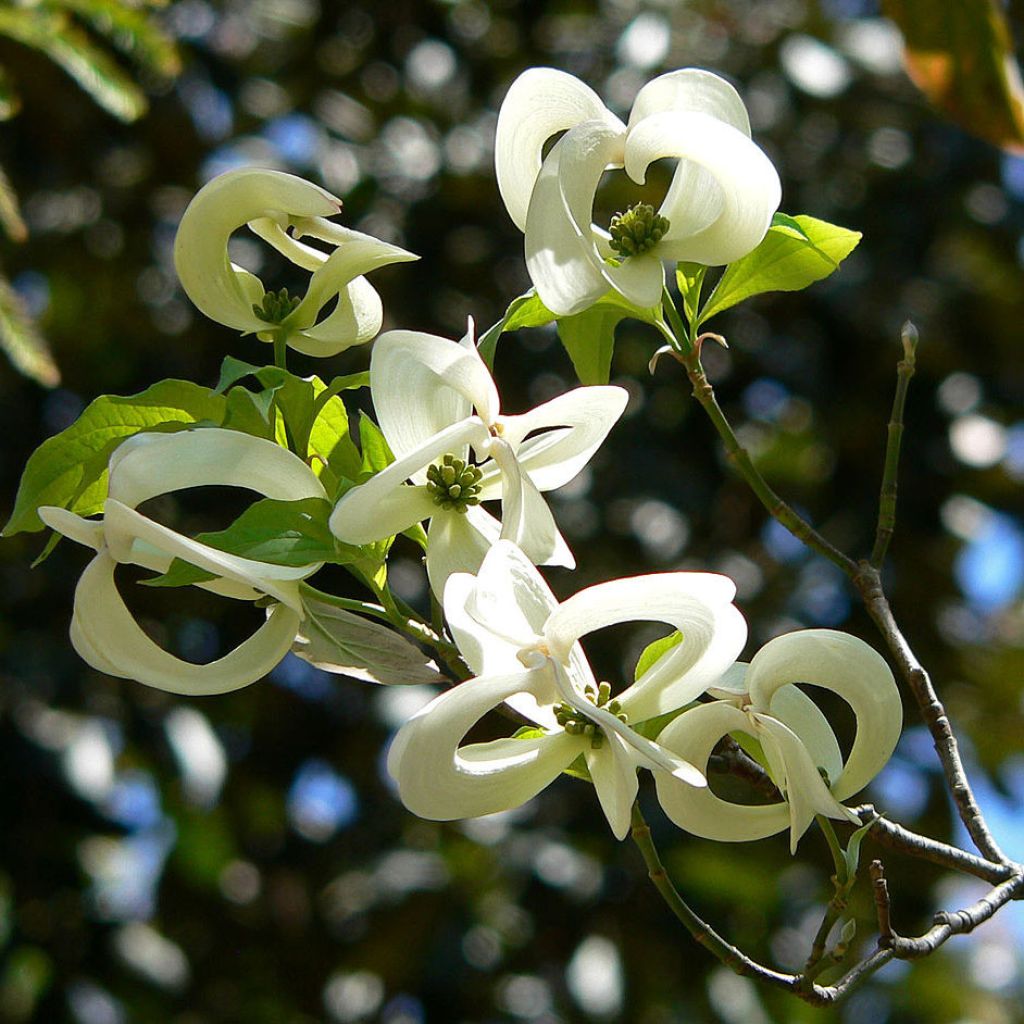

Cornus florida subsp. urbiniana - Flowering Dogwood
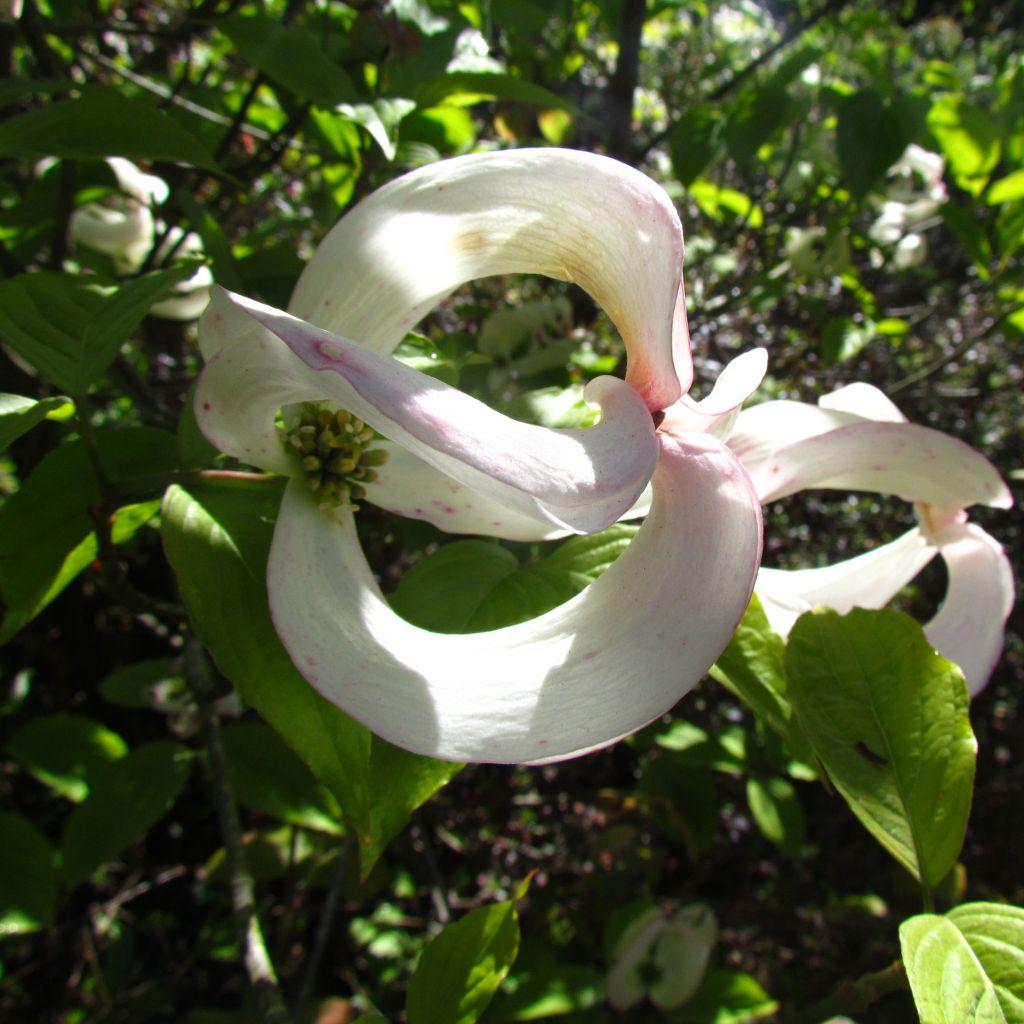

Cornus florida subsp. urbiniana - Flowering Dogwood
Cornus florida subsp. urbiniana - Flowering Dogwood
Cornus florida subsp. urbiniana
Flowering Dogwood, American Dogwood
Well conditioned, let's hope it withstands the winter :)
Eveline D., 24/10/2020
Why not try an alternative variety in stock?
View all →This plant carries a 24 months recovery warranty
More information
We guarantee the quality of our plants for a full growing cycle, and will replace at our expense any plant that fails to recover under normal climatic and planting conditions.
From €5.90 for pickup delivery and €6.90 for home delivery
Express home delivery from €8.90.
Does this plant fit my garden?
Set up your Plantfit profile →
Description
Rare and unique, the Cornus florida subsp. urbiniana distinguishes itself from other dogwoods with its white bracts gathered at their apex to form small Chinese lanterns. This small tree thrives in sunny, slightly acidic soils and is perfect for small gardens thanks to its moderate size and dual decorative interest: the autumn foliage colouration is as spectacular as its flowering!
The Mexican Flowering Dogwood is as rare in its natural habitat in mountain forests in eastern Mexico as it is in collections and nurseries. It is a large shrub or exceptional small tree with its spring flowering, composed of small, discreet green ball-shaped flowers surrounded by visible white bracts. In the Cornus florida subsp. urbiniana, the bracts are recurved, which makes them appear narrower, and fused at their ends so that the "flower" cannot fully open and takes the form of a small lantern. It is also worth noting that this subspecies retains its foliage longer in autumn, which further increases its decorative interest as the foliage takes on beautiful wine-red hues before falling.
Cornus florida subsp. urbiniana has a narrower habit than other dogwoods. It can reach up to 8 meters in height. It is a semi-hardy bush resistant to temperatures down to -12C that is suitable for all mild climates. It requires a bright location in a non-limestone, light and humus-rich soil, which remains consistently moist but without excess water. It does not appreciate strong winds and prefers a position sheltered from late spring frosts.
Extremely rare and reputedly hard to find, this Mexican Flowering Dogwood deserves a special place in your garden, where its architectural design will blend in with all styles, from a white garden to a contemporary garden to an English cottage garden and even small urban gardens. Our advice is to complement it with a Hydrangea paniculata 'Great Star' with equally unusual, undulate petals, which will bloom in summer and appreciates the same growing conditions, or other white or pink perennials or even acid-loving shrubs.
Report an error about the product description
Cornus florida subsp. urbiniana - Flowering Dogwood in pictures
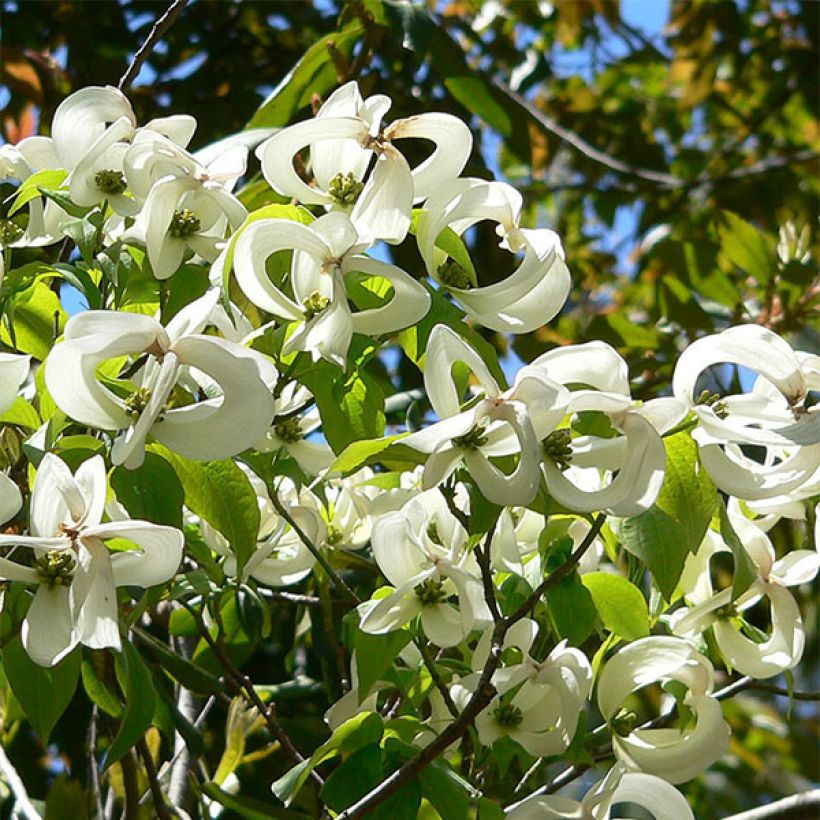

Plant habit
Flowering
Foliage
Botanical data
Cornus
florida subsp. urbiniana
Cornaceae
Flowering Dogwood, American Dogwood
North America
Other Cornus
Planting and care
Cornus florida subsp. urbiniana is best planted in a sunny or partially shaded environment. It enjoys the warmth, that helps with its flowering, and is sensitive to late spring frosts. It should be placed in ordinary soil with little limestone, preferably slightly acidic. The soil should be moist but well-drained. It can be planted in spring or autumn (freezing temperatures excluded). Easy to grow, the Flowering Dogwood requires little maintenance. Pruning is not essential. To maintain a beautiful habit, trim diseased or dead wood and crossed branches to keep only the healthy growth.
Planting period
Intended location
Care
-
, onOrder confirmed
Reply from on Promesse de fleurs
Spring-flowering shrubs
Haven't found what you were looking for?
Hardiness is the lowest winter temperature a plant can endure without suffering serious damage or even dying. However, hardiness is affected by location (a sheltered area, such as a patio), protection (winter cover) and soil type (hardiness is improved by well-drained soil).

Photo Sharing Terms & Conditions
In order to encourage gardeners to interact and share their experiences, Promesse de fleurs offers various media enabling content to be uploaded onto its Site - in particular via the ‘Photo sharing’ module.
The User agrees to refrain from:
- Posting any content that is illegal, prejudicial, insulting, racist, inciteful to hatred, revisionist, contrary to public decency, that infringes on privacy or on the privacy rights of third parties, in particular the publicity rights of persons and goods, intellectual property rights, or the right to privacy.
- Submitting content on behalf of a third party;
- Impersonate the identity of a third party and/or publish any personal information about a third party;
In general, the User undertakes to refrain from any unethical behaviour.
All Content (in particular text, comments, files, images, photos, videos, creative works, etc.), which may be subject to property or intellectual property rights, image or other private rights, shall remain the property of the User, subject to the limited rights granted by the terms of the licence granted by Promesse de fleurs as stated below. Users are at liberty to publish or not to publish such Content on the Site, notably via the ‘Photo Sharing’ facility, and accept that this Content shall be made public and freely accessible, notably on the Internet.
Users further acknowledge, undertake to have ,and guarantee that they hold all necessary rights and permissions to publish such material on the Site, in particular with regard to the legislation in force pertaining to any privacy, property, intellectual property, image, or contractual rights, or rights of any other nature. By publishing such Content on the Site, Users acknowledge accepting full liability as publishers of the Content within the meaning of the law, and grant Promesse de fleurs, free of charge, an inclusive, worldwide licence for the said Content for the entire duration of its publication, including all reproduction, representation, up/downloading, displaying, performing, transmission, and storage rights.
Users also grant permission for their name to be linked to the Content and accept that this link may not always be made available.
By engaging in posting material, Users consent to their Content becoming automatically accessible on the Internet, in particular on other sites and/or blogs and/or web pages of the Promesse de fleurs site, including in particular social pages and the Promesse de fleurs catalogue.
Users may secure the removal of entrusted content free of charge by issuing a simple request via our contact form.
The flowering period indicated on our website applies to countries and regions located in USDA zone 8 (France, the United Kingdom, Ireland, the Netherlands, etc.)
It will vary according to where you live:
- In zones 9 to 10 (Italy, Spain, Greece, etc.), flowering will occur about 2 to 4 weeks earlier.
- In zones 6 to 7 (Germany, Poland, Slovenia, and lower mountainous regions), flowering will be delayed by 2 to 3 weeks.
- In zone 5 (Central Europe, Scandinavia), blooming will be delayed by 3 to 5 weeks.
In temperate climates, pruning of spring-flowering shrubs (forsythia, spireas, etc.) should be done just after flowering.
Pruning of summer-flowering shrubs (Indian Lilac, Perovskia, etc.) can be done in winter or spring.
In cold regions as well as with frost-sensitive plants, avoid pruning too early when severe frosts may still occur.
The planting period indicated on our website applies to countries and regions located in USDA zone 8 (France, United Kingdom, Ireland, Netherlands).
It will vary according to where you live:
- In Mediterranean zones (Marseille, Madrid, Milan, etc.), autumn and winter are the best planting periods.
- In continental zones (Strasbourg, Munich, Vienna, etc.), delay planting by 2 to 3 weeks in spring and bring it forward by 2 to 4 weeks in autumn.
- In mountainous regions (the Alps, Pyrenees, Carpathians, etc.), it is best to plant in late spring (May-June) or late summer (August-September).
The harvesting period indicated on our website applies to countries and regions in USDA zone 8 (France, England, Ireland, the Netherlands).
In colder areas (Scandinavia, Poland, Austria...) fruit and vegetable harvests are likely to be delayed by 3-4 weeks.
In warmer areas (Italy, Spain, Greece, etc.), harvesting will probably take place earlier, depending on weather conditions.
The sowing periods indicated on our website apply to countries and regions within USDA Zone 8 (France, UK, Ireland, Netherlands).
In colder areas (Scandinavia, Poland, Austria...), delay any outdoor sowing by 3-4 weeks, or sow under glass.
In warmer climes (Italy, Spain, Greece, etc.), bring outdoor sowing forward by a few weeks.


































